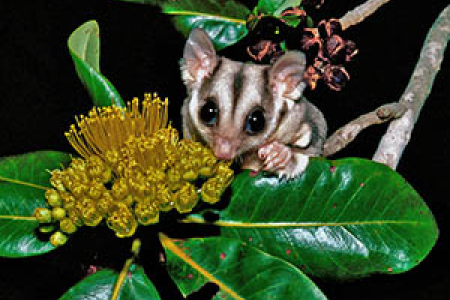DNA testing prompts call for rethink on glider’s identity
Charles Darwin University researchers may have identified a new species of tree-dwelling glider in the savannah woodlands and monsoon forests of the Top End.
Preliminary forensic analysis of a marsupial, presumed for more than 150 years to be a type of sugar glider, indicates the creature is more closely related to two other species of glider.
Professor Sue Carthew heads a group including Professor Steve Cooper from the SA Museum and Dr Rebecca Montague-Drake from CDU, that has brought into question the identity of what is known in local Indigenous languages as the Lambalk glider (Petaurus breviceps ariel), a sub-species of the sugar glider.
“From analysis of the DNA and the morphology of some 20 specimens we can say fairly clearly that they are not sugar gliders,” Professor Carthew said.
“The DNA suggests they are more closely related to either the squirrel glider or the mahogany glider.”
Professor Carthew said that in terms of its morphology, it contained some features reminiscent of the sugar glider and some reminiscent of the squirrel glider.
“Its body mass is more in keeping with that of a sugar glider but the length of its tail and the pointiness of its snout are more reminiscent of a squirrel glider.”
Professor Carthew described the results as exciting.
“If it turns out to be a squirrel glider then we have identified a significant expansion to its known range, which extends throughout eastern and southern Australia, but not to the Northern Territory.
“Another possibility is that it may be a new species, but we would need to carry out a lot more work around its taxonomy before we could stake that claim.
“The discovery of a new mammal is extremely rare these days.”
Professor Carthew said glider specimens from museums and other collections were being analysed as part of the project.
“We also examined live specimens and remains, mostly from cat kills, found in Kakadu and other parts of the Top End.”
